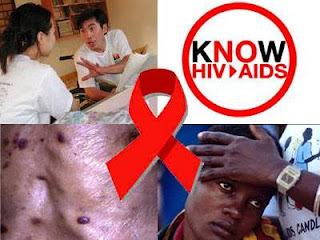views the best pictures

1. HIV (human immunodeficiency virus) infects cells of the immune system
Infection results in the progressive deterioration of the immune system, breaking down the body's ability to fend off infections and diseases. AIDS (Acquired immune deficiency syndrome) refers to the most advanced stages of HIV infection, defined by the occurrence of any of more than 20 opportunistic infections or related cancers.2. HIV can be transmitted in several ways
HIV can be transmitted through:- Unprotected sexual intercourse (vaginal or anal) or oral sex with an infected person;
- Transfusions of contaminated blood;
- The sharing of contaminated needles, syringes or other sharp instruments;
- The transmission between a mother and her baby during pregnancy, childbirth and breastfeeding.
3. 34 million people live with HIV/AIDS worldwide
The vast majority are in low- and middle-income countries. An estimated 2.7 million people were newly infected with the virus in 2010.4. HIV/AIDS is the world’s leading infectious killer
About 30 million people have died to date. An estimated 1.8 million people die every year from HIV/AIDS.5. Combination antiretroviral therapy (ART) prevents the HIV virus from multiplying in the body
If the reproduction of the HIV virus stops, then the body's immune cells are able to live longer and provide the body with protection from infections.6. About 6.65 million HIV-positive people had access to ART in low- and middle-income countries at the end of 2010
This represents a 16-fold increase since 2003. Overall, the coverage of ART in low- and middle-income countries continued to increase and was 47% of the 14.2 million people eligible for treatment at the end of 2010.7. An estimated 3.4 million children are living with HIV/AIDS
According to 2010 figures most of the children live in sub-Saharan Africa and were infected by their HIV-positive mothers during pregnancy, childbirth or breastfeeding. Almost 1100 children become newly infected with HIV each day. The number of children receiving ART increased from about 75 000 in 2005 to 456 000 in 2010.8. Mother-to-child-transmission is almost entirely avoidable
However access to preventive interventions remains low in most low- and middle-income countries. But, progress has been made. In 2010, 48% of pregnant women living with HIV received the most effective regimens (as recommended by WHO) to prevent mother-to-child transmission of the virus.9. HIV is the strongest risk factor for developing active TB disease
In 2010, more than 350 000 deaths from tuberculosis occurred among people living with HIV. That is one fifth of the estimated 1.8 million deaths from HIV in that year. The majority of people living with both HIV and TB reside in sub-Saharan Africa (about 82% of cases worldwide).10. There are several ways to prevent HIV transmission
Key ways to prevent HIV transmission:- Practice safe sexual behaviors such as using condoms;
- Get tested and treated for sexually transmitted infections, including HIV;
- Avoid injecting drugs, or if you do, always use new and disposable needles and syringes;
- Ensure that any blood or blood products that you might need are tested for HIV.

No comments:
Post a Comment